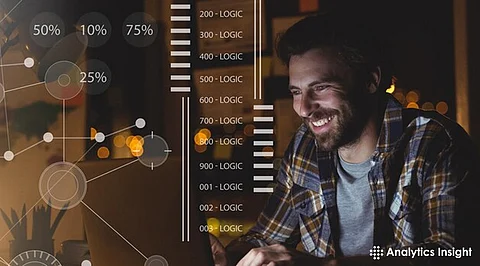

Data is everywhere—on social media, in shopping apps, in schools, hospitals, and even games. It helps companies make smarter choices, from deciding which product to launch to figuring out how to keep customers happy. That’s where data science comes in. It’s the field that turns raw numbers into real insights.
For anyone curious about tech or looking to build a future-proof skill, data science is a great place to start. While becoming a full-fledged expert takes time, 30 days is enough to get a solid start. Here’s a week-by-week guide packed with simple tools and resources.
All skills begin with the fundamentals. For data science, that entails learning Python—a simple programming language that drives a lot of work in this discipline.
W3Schools and Codecademy are two websites that provide interactive, free lessons on how Python works. They are geared toward total beginners and make it simple to learn such things as variables, loops, and functions.
After getting a grip on Python, the next step is statistics. It helps explain what the data actually means. Sites like Khan Academy and the StatQuest YouTube channel break down tricky ideas like averages, probability, and distributions in simple, visual ways. These are the building blocks for understanding how data is used in real life.
After getting the basics covered, it is time to work with real data. Libraries such as Pandas and NumPy assist in cleaning and structuring data. They enable easier observation of patterns and computation without having to do everything manually.
For practice, Kaggle is an excellent site. It contains small, easy-to-work-with datasets with step-by-step code examples to work through. These assist in learning how to apply tools to real data, not theory.
Then there's data visualization, the other important aspect of narrating with numbers. Libraries such as Matplotlib and Seaborn assist in creating charts and graphs. A useful free resource is the Python Data Science Handbook by Jake VanderPlas, found on GitHub. It describes how to make data something that is easy to interpret and communicate.
Machine learning is where things get interesting. This is the part of data science that teaches computers to identify patterns and make predictions.
Begin with easy concepts like linear regression, decision trees, and clustering. Google's Machine Learning Crash Course is one of the best free tutorials. It uses short videos with interactive practice to teach how these models operate, without requiring advanced mathematics.
In order to develop these models using code, the primary Python package utilized is Scikit-learn. Its homepage has plenty of easy-to-follow examples illustrating the steps for how to use machine learning.
To find out for oneself how exactly algorithms function, videos such as 3Blue1Brown from YouTube make detailed concepts like neural networks understandable via sensible animations, even for inexperienced people.
Learning is more meaningful when it's used in real projects. The aim for the final week is to make something with all the skills acquired up until this point.
Kaggle's Titanic: Machine Learning from Disaster challenge is an excellent place to start. It provides a famous problem with lots of guidance, ideal for confidence-building.
Additional datasets are available on websites such as the UCI Machine Learning Repository or data.gov.in. These include things like movie reviews, weather, air quality, and so forth. Choosing a subject that's of personal interest, such as sports scores, mobile prices, or game statistics, increases the fun factor and the relevance of the learning.
To stay on track and get feedback, online communities like Reddit’s r/datascience, LinkedIn groups, or Discord servers offer a space where beginners can ask questions, share work, and connect with others on the same path.
Other platforms offer a bit more of a structured path. More full-fledged courses like the IBM Data Science Professional Certificate on Coursera or the Data Science Bootcamp on Udemy are available. These aren’t required to start, but they’re useful for those who want more guidance or a certificate for their resume.
Tools like Google Colab and JupyterLab let users write and test code in a browser without needing to install anything. For note-taking, apps like Notion or Obsidian are great for keeping track of what’s been learned along the way.
Data science needn't seem too intimidating with a little effort and right guidance. Using the proper plan and suitable tools, an excellent grounding is possible even in a span of one month. Whether it's to pursue a new hobby or to set oneself up for future career options, studying data science is a good investment in a world driven by data. The key is to keep at it and to be curious—abilities that are just as valuable as any coding language.
